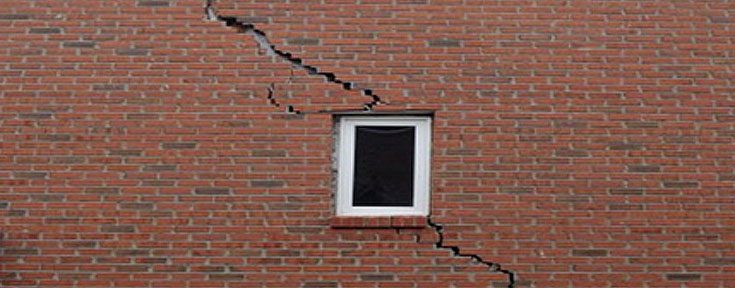The Perils of Subsidence
[vc_row][vc_column][vc_column_text]Looking to buy a plot of land to build on, or looking at new builds, know your ground to prevent subsidence. If building a house, the ideal plot a developer will look for is one where the soil is:
- Light with no newly filled earth on surface and solid soil with sand or rock 600mm to 1200mm below the top surface.
What a developer does not want is a cohesive soil (shrink/swell)
- Clay and silt soils have the ability to change their volume whether wet or dry giving them the ability to expand when wet and shrink when dry.
They will also look for:
- A Plot area with an un-obstructed breeze and sun light
- The ideal Plot should be within a fully developed locality or fast developing Area with access to roads, water supplies, electricity and drainage.
- The plot should preferably be rectangular and not of an irregular shape.
- The plot should be fairly elevated and levelled with a uniform shape for quick drainage of rain water.
Although soil accounts for 75% of subsidence, leaks and drains account for the 15 – 25% of the remaining factors. Although if living in the UK, 60% of Subsidence related claims can be due to tree roots.
If you have a tree near your property it is wise to know the species and its water intake as a mature deciduous tree can remove 50,000 litres of water a year which could cause your soil to shrink if you have a clay based soil. Know the distance of its growth and intake to see if it will infringe on the zone of influence.
Other contributing factors to subsidence can be man-made for example: excavations around the foundations, extensions, drainage or work on adjacent land as this could cause a sideways collapse of the soil under your foundations.
Vibrations can also have an impact on the soil, for example pile driving on building sites can cause a downward movement of the solid under foundations.
To help identify subsidence in your property here is some issues to look out for:
- Vertical and diagonal cracks, tapering between the top and bottom of the property.
- Cracks extending through the damp proof course and down in the foundations.
- External cracking reflecting internally.
- Rucking of wallpaper in corners.
- Openings in the structure (windows, doors frames) as these are weak points in the structure of the property causing them to stick.
Subsidence is a common problem but knowing your grounds and your surroundings may help to prevent or reduce the degree of damage that can be caused to your property whether already built or waiting to be built.
BROUGHT TO YOU BY HICH LTD
Please contact HICH Ltd on: call 0345 257 0858 (office) or 07725 317177 (mobile). Email hichinfo@aol.com[/vc_column_text][/vc_column][/vc_row]








